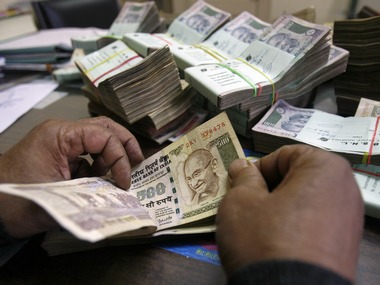The macro environment is turning distinctly favourable for the Indian Rupee (INR). On the domestic macro front, sharp fall in current account deficit and strong inflows into the FCNR B swap window is highly rupee positive. On the global front, the rally in the Euro, the weakening of the Japanese Yen (Yen) and rally in global equity markets suggest that risk is back in the market. Increased risk appetite amongst global investors would lead to inflows into Indian bonds and equities.
The INR is up close to 10% against the USD from record lows of Rs 68.80 seen in August 2013 and it can well rally by another 5% in December 2013 on the back of positive domestic and global macros.
The risk to the INR rally is the Fed announcing asset purchase tapering this month and the State Elections in India throwing up surprising results. State election results are seen as a strong precursor to the 2014 general election results. The States of MP, Rajasthan, Chhattisgarh and Mizoram and the Union Territory of Delhi are awaiting election results in December.
[caption id=“attachment_1246877” align=“alignleft” width=“380”]
 Currency markets behave in extremes. Negatives get amplified and so are positives. The negatives of weak CAD and Fed tapering took down the INR to record lows and now positives mentioned earlier could take up the INR from current levels of Rs 62.10.
Reuters[/caption]
The Current Account Deficit (CAD) data for the second quarter of 2013-14 showed a sharp drop in the deficit to $5.6 billion. CAD was at $21.8 billion in the first quarter of 2013-14 and at $21 billion in the second quarter of 2012-13. April-September 2013 CAD stood at $26.9 billion against $37.9 billion seen last year, a fall of 29%. CAD fall has largely been due to the fall in trade deficit of 8.5% in the first half of 2013-14.
Trade deficit has come off this fiscal largely on the back of pick up in exports that grew by 2.7% in first half of 2013-14 while imports fell by 2% on the back of fall in gold imports of 65% in the second quarter of 2013-14 over the same period last year. The ban on gold imports continue to stay and the central bank estimates that CAD for full year 2013-14 will be at around USD 56 billion, a drop of 36% from USD 87.8 billion seen in fiscal 2012-13.
The RBI’s swap window for FCNR B deposits that opened on September 2013 and closed on 30th November 2013 has attracted USD 34 billion. India’s foreign exchange reserves have gone up by USD 12 billion in the period. USD inflow is positive for the INR, whatever the route and RBI could well open the window again if there is a threat to the INR on the back of the Fed withdrawing stimulus.
On the global front, the currency and equity movements suggest that risk is back in the market. The JPY is down by 4.5% against the USD since September 2013 while the Euro is up 2.7% against the USD. JPY is largely seen as a carry trade currency and a weak JPY prompts rally in risk assets. A strong Euro implies that the markets are reducing worries of sovereign debt issues in the Eurozone and that the economy has bottomed out. Equities across the globe have rallied to record highs or multi year highs on the back of confidence in currency markets.
FII’s who have been net sellers of INR debt since June 2013 are slowly picking up pieces in December and have turned net buyers albeit for a small amount of $0.23 billion. FII’s have been net buyers of equity since September 2013. FIIs could well come back into the debt market given that yields are up by 150bps since May 2013 and given that the INR is looking more stable now than what it was earlier.
Currency markets behave in extremes. Negatives get amplified and so are positives. The negatives of weak CAD and Fed tapering took down the INR to record lows and now positives mentioned earlier could take up the INR from current levels of Rs 62.10.
The overhang of Fed tapering, domestic politics, and weak domestic and global economic growth are still there but given that the INR is still down over 12% against the USD since April 2013 the currency has the comfort to at least get back closer to where it came from.
Arjun Parthasarathy is editor Investors are Idiots.com and INRBONDS.com. Follow him on twitter #investorsidiots


)
)
)
)
)
)
)
)
)



